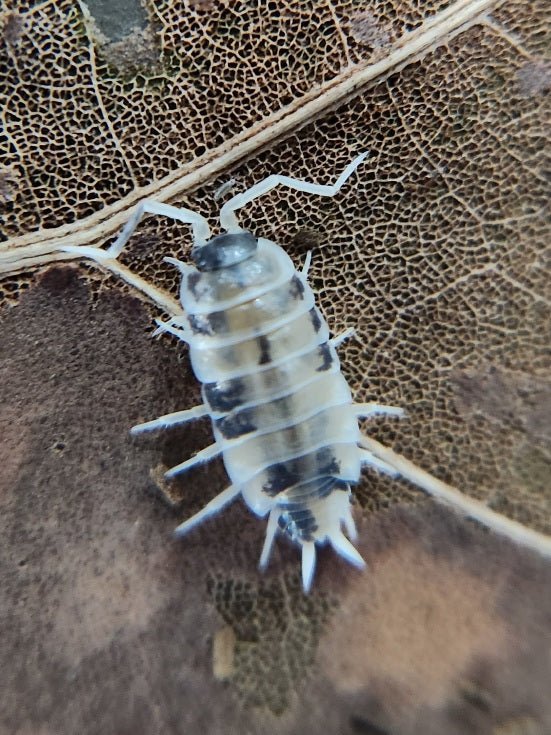Yay! So you've decided to enter the world of isopods, but you aren't sure which species is a good fit for beginners. I'm here to help. There are several species of hardy isopods that are great to start your journey. It's fun and easy to set up an isopod enclosure. I recommend starting off very simple with the enclosure. Starting off simple gives you a chance to figure out what you like about the enclosure, and also what you'd like to change for this enclosure or future enclosures. There are many, many different methods to set up an isopod bin, and it will take a bit of trial and error to perfect your method.
I have always kept my isopod bins very basic, and my isopods thrive. My bins are plastic 6-quart shoeboxes or 16-quart plastic boxes. I use the small shoeboxes for starting off with less than 50 isopods. For beginner species, if I'm starting off with more than 50 isopods, then I use the larger 16-quart box. I make 6-10 ventilation holes along the front of the box, and then I also make 2-3 ventilation holes on each side of the box for some cross ventilation. I do not drill any holes in the lid since I stack my boxes. I add 2.5 to 3 inches of organic topsoil to the box and I mix several handfuls of crushed leaves into the soil. On the end without the ventilation holes, I place a large handful of damp sphagnum moss on top of the soil so it's covering about a quarter of the box. Then I add a piece of bark or cork bark to the center area of the box, I add a piece of cuttlebone for the isopods' calcium needs (eggshells and crushed oyster shells work as well) near the end of the box near the ventilation holes. Finally, I fill the box up with leaves. Do not be stingy on the leaves. Leaves are extremely important to the health of the isopods. It's one of their main sources of food. Once I add my isopods to their enclosure, I will then feed them a tiny piece of vegetable such as carrot or squash and a pinch of flaked fish food or a small piece of dried shrimp or minnow. I cannot stress enough how important it is to feed extremely small amounts of supplemental foods such as veggies and dried protein. The pieces of supplemental foods (veggies and protein) you provide to the isopods should be no larger than a small pencil eraser. The isopods do not need to be fed daily. Once a week is sufficient. Overfeeding will encourage pests such as fungus gnats and mites. As the colony gets larger, you can add larger pieces of food. I mist and feed my isopods once a week, but depending on your climate, you may have to mist more or less frequently. The moss should stay damp but not soaking wet.
Now let's get to the super fun part -- choosing a great beginner isopod! Any of the beginner isopods in the list below can be housed using the basic enclosure method above.
Porcellionides pruinosus - These are very hardy isopods that breed easily. Pruinosus are a medium-sized isopod that thrives in bioactive enclosures. They also make a great feeder insect. There are numerous color morphs including: Powder Blue, Powder Orange, Oreo Crumble, Pink, Whiteout, Party Mix, Orange Cream, and Red Koi.
Porcellio laevis - These are hardy large isopods that also breed easily. Laevis are also great in bioactive enclosures since they can tolerate a wide range of environments. They are excellent cleaners, and they enjoy protein. Laevis are fun to watch as they waddle around looking for food or somewhere to hide. There are also several morphs of laevis including: Dairy Cows, Milkbacks, White, and Orange.
In my opinion, pruinosus and laevis are the easiest entry-level isopods for beginners because they are very forgiving with their environmental requirements. There are many other isopod species that are simple to care for, but if you're unsure where to start off, these two species would be the perfect fit.
As always, if you have any questions, please click the "Chat" button on the website or email me. I'm always happy to help!
-Sara



